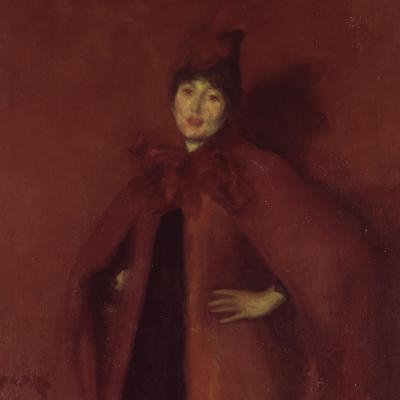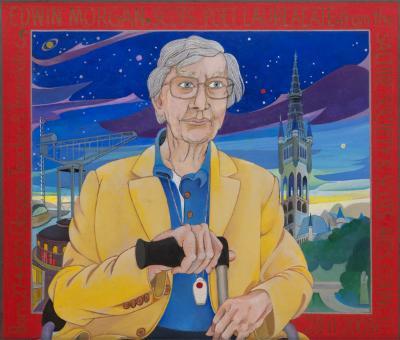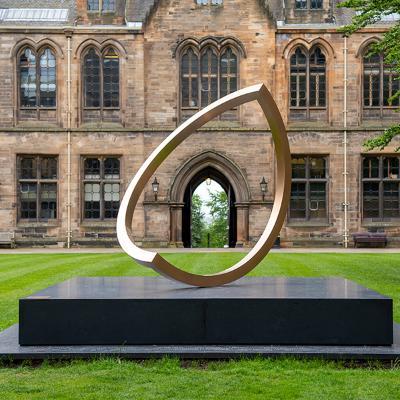
Glasgow 850: Art with a flourish
By Martin Shannon
In the last of three features celebrating the city of Glasgow's 850th anniversary, we look at the University’s outstanding contribution to historic and contemporary art in the city.
From its most famous artistic son, Charles Rennie Mackintosh, to its latest Turner Prize winner Jasleen Kaur, from Dalí’s sublime 'Christ of St John of the Cross' to the treasured artworks, sculptures and artefacts of the Burrell Collection, the city of Glasgow is steeped in art.
At the heart of this flourishing creative expression, the University plays a crucial role preserving and curating the past, encouraging and celebrating the contemporary, and inspiring future artistic world changers. Many of our alumni – not only from our highly regarded History of Art and Fine Art programmes – have become influential artists, curators, critics and other leading lights, in local and international art scenes.
The Hunterian Art Gallery
Perhaps the University’s most significant contribution to art in the city can be found on the Gilmorehill campus in Scotland’s oldest public museum. Since 1807, The Hunterian has been central to Glasgow’s cultural landscape, inspiring curiosity, learning and innovation. Unrivalled for its collections of works by Charles Rennie Mackintosh and James McNeill Whistler, the Hunterian Art Gallery also features works by Rembrandt, Rubens, the Glasgow Boys, the Scottish Colourists and many celebrated contemporary artists, as well as works by other less well-represented artists. It offers a rolling programme of exciting contemporary art exhibitions, including the current Glasgow 850 programme, which explores the city’s transformation through time, drawing upon The Hunterian’s own collections to reflect on Glasgow’s evolving identity.

Detail of lights in the Mackintosh House at the Hunterian Art Gallery
The Hunterian may be the most recognisable bridge between University and city, but Glasgow's artistic heritage flows back deeply through the people, collections and ideas that permeate the arts with a fierce local pride and resolutely global outlook.
Charles Rennie Mackintosh and the Mackintoshes’ living blueprint
The Hunterian preserves and displays the largest single collection of works by iconic Scottish architect, designer, watercolourist and artist – Charles Rennie Mackintosh.
Underappreciated in his lifetime, Mackintosh is now widely recognised and celebrated as a visionary of modern design and his worldwide influence and legacy is deeply embedded in Glasgow’s cultural identity. The Willow Tea Rooms, Scotland Street School, Queen’s Cross church and his architectural masterpiece, The Glasgow School of Art (currently awaiting renovation) are testament to his inspired and distinctive design. Other designs, including a competition entry for Liverpool’s Anglican Cathedral, were never built but showcase his holistic genius for integrating structure, decoration and function.
The Hunterian’s impressive Mackintosh collection consists of many significant architectural drawings, furniture, textile designs, sketchbooks and watercolours. Most remarkably, The Hunterian offers visitors a unique immersive experience into Mackintosh’s art, with a faithful reconstruction of the domestic interiors from the home he shared with his artist wife Margaret Macdonald Mackintosh. Margaret was a leading member of the Glasgow Girls, a group of pioneering female artists and designers who developed their own distinctive Scottish variant of Art Nouveau.
With its original fittings and furnishings, as well as fastidious reproductions, The Mackintosh House provides a 360° view of their shared artistic vision. Perched incongruously on the hill in front of the University Library, it forms an integral part of the Hunterian Art Gallery. From the outside, the raised house appears entombed in concrete with an inaccessible front door high above the pavement.
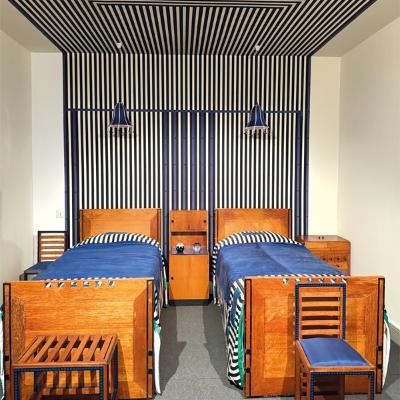
Recreation of Mackintosh's dramatic guest bedroom from 78 Derngate, Northampton, of 1916. Photo: Darren Jewell-Irons
But access through the Art Gallery and we discover the meticulously reconstructed principal interiors from 6 Florentine Terrace, where the Mackintoshes lived from 1906 to 1914. Filled with the couple’s own furniture, fixtures and fittings, all to their distinctive design, and decorated as closely as possible to the original, these beautiful rooms provide rare insight into the Mackintoshes’ home life. Remarkable then, and now, for the disciplined austerity of the furnishings and decoration, these light and airy rooms showcase an artistic couple at the height of their powers, living and breathing a beguiling aesthetic of their own invention.
Glasgow School of Art
The University has enjoyed a long and fruitful partnership with Glasgow School of Art (GSA), with GSA degrees validated by the University, and by running joint programmes together such as Product Design Engineering, producing alumni such as LEGO designer and judge on TV show 'LEGO Masters' Amy Corbett (MEng 2012).
Recent graduate Mark Foulger (MEng 2016) now works as a Senior Product Design Engineer: "It means a lot to be part of both the GSA and UofG communities. My course immersed me in two of the city’s richest engineering and creative cultures, both continue to shape how I think and work as a designer today."
"It gave me solid foundations in both engineering and user-centred design. More importantly, it taught me how to apply those principles to any real-world problem and keep learning as I go.” – Mark Foulger
University and City – Glasgow’s flourishing art
As the city celebrates its 850th anniversary, Glasgow’s irrepressible creative energy remains undimmed and – with the University at its heart, preserving its artistic heritage and nurturing the next generation of artists and thinkers – a flourishing future seems assured.
Salvador Dalí and Dr Tom Honeyman at Port Lligat, Spain, in 1952. Image: © GSC CIC Glasgow Museums and Libraries Collection
Dalí and the deal of the century
Medical graduate and former Rector of the University Dr Tom Honeyman made an enduring impact on art in the city as the acquisitive Director of Glasgow Art Galleries & Museums from 1939 to 1954. He was instrumental in bringing works by Braque, Cezanne, van Gogh, Matisse, Picasso, Renoir, Courbet and Seurat to Glasgow as well as influencing Sir William Burrell's decision to gift to Glasgow his vast collection of art and antiquities. However, Honeyman is best remembered for his foresight in purchasing 'Christ of St John of the Cross' by Spanish surrealist Salvador Dalí on behalf of the city for £8,200 in 1952. The expense was widely criticised at the time, but the much-loved painting has since paid for itself many times over in reproduction fees and is now estimated to be worth over £60m.
"A glorious summer with your picture. Visitors and discussions still continue and I have come triumphantly through several battles, enjoying all of them." – Dr Tom Honeyman, writing to Dalí on the public and institutional challenges he faced when the painting was first brought to Glasgow
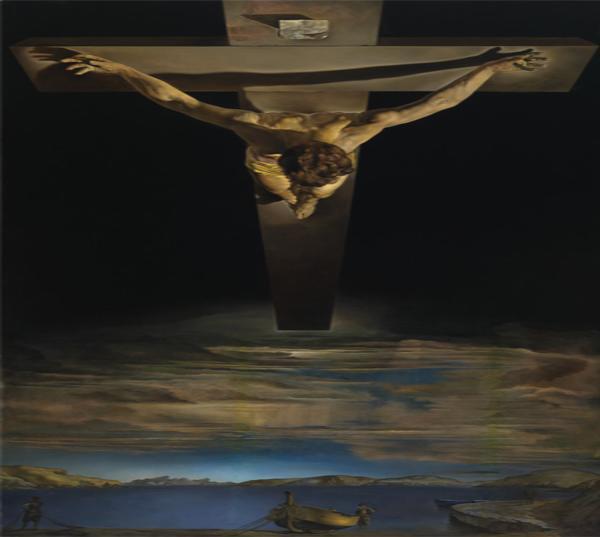
The iconic 'Christ of St John of the Cross (Salvador Dalí, 1951), housed in Glasgow's Kelvingrove Art Gallery & Museum and a beloved attraction for generations of Glaswegians. Image: © GSC CIC Glasgow Museums and Libraries Collection
Three centuries, three creators
The perfectionist – James McNeill Whistler
Best known for his enigmatic painting, 'Portrait of the Artist’s Mother' (more commonly renowned as 'Whistler’s Mother') – now hanging in the Musee d’Orsay in Paris and estimated to be worth a cool $36 million – James McNeill Whistler was born in Lowell, Massachusetts, but spent his working life in France and Britain.
He studied art at the United States Military Academy and engraving with the US Coast and Geodetic Survey before sailing to Europe to study at the Ecole Impériale et Spéciale de Dessin in Paris. This eclectic training, together with an enduring interest in light and weather and its effects on land and seascapes, shaped his life’s work.
The Hunterian houses one of the world’s pre-eminent collections of Whistler’s art including 80 oil paintings; 220 drawings, watercolours and pastels; 150 lithographs and 390 etchings; and his private papers and the contents of his studio.
Among the highlights are a number of striking full-length portraits including 'Harmony in Red: Lamplight' (top right), the portrait of Beatrix Birnie Philip, who later became Whistler's wife. Beatrix was a gifted artist in her own right and The Hunterian is home to the largest single collection of her work.
Whistler’s artistic legacy continues to be explored by University researchers through major digital and technical art history projects.
The provocateur – Alasdair Gray
Born in Glasgow in 1934, writer, illustrator and muralist Alasdair Gray helped define a cultural renaissance in Scotland in the late 20th century. His visual art was deeply entwined with his literary work, often illustrating his own books with intricate, symbolic drawings and designing their typography and layout.
Gray studied at Glasgow School of Art but had a strong connection with the University, serving as Writer-in-Residence for two years. The role gave him the time and institutional support to focus intensively on completing his landmark novel 'Lanark', which became one of the most influential works in modern Scottish literature.
The Hunterian holds several works by Gray in its collection – many of which were donated by the artist himself – and in 2022 hosted a major exhibition titled 'Alasdair Gray’s Lanark: A World Made on Paper'. The exhibition celebrated the 40th anniversary of the publication of his seminal novel and featured Gray’s manuscripts, illustrations, and design work including his original jacket cover design.
As well as materials related to 'Lanark', The Hunterian also holds other significant works by Gray such as 'Blossom and Diane', 'The Artist’s Family and Friend', and a portrait of the Scottish poet Edwin Morgan titled 'Portrait of EM' (middle right).
His prized contributions to The Hunterian’s collections, as well as the University Library’s Archives & Special Collections, reflect his status not only as a literary figure but also as a visual artist of considerable range and originality.
The symbolist – Jephson Robb
Since graduating in Political Economy & Economic History at UofG, the acclaimed Scottish artist and designer Jephson Robb (MA 1998) has maintained close links with us. In 2023, following several prominent public and private commissions and seeing his work join the permanent collections of the Museum of Modern Art in New York, Jephson was asked to produce a sculpture in celebration of the generous donors who support our world-changing University. The resulting 'Alma Mater' sculpture (bottom right) – the shape of a beech tree seed wrought in bronze – is an artwork of deceptive simplicity and poignant symbolism. Jephson explains: “During site visits to the East Quadrangle, I was captivated by the majesty of the beech tree that’s stood there for close to 200 years. I was drawn to contemplate who planted it, which made me wonder if they did so knowing their action would benefit future generations. I then drew a direct parallel between the planting of a seed and the donations of Glasgow’s philanthropic community, whose generosity today benefits current and future generations, enabling them to grow."
This feature was first published in October 2025.



